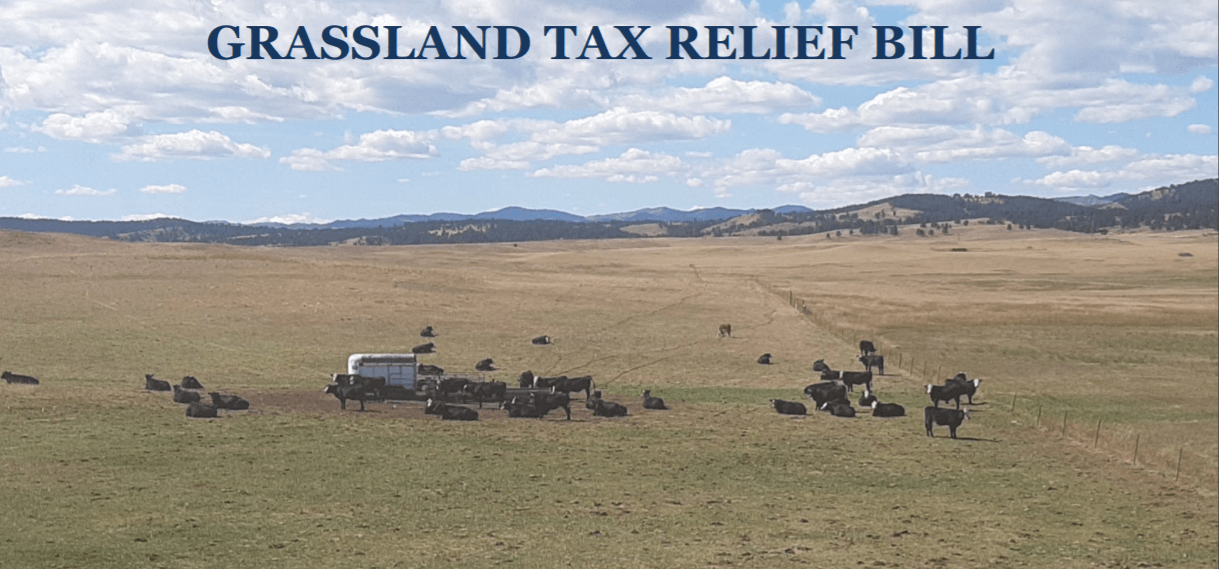Removing roadblocks for ranchers
Trish Ladner • October 20, 2021
Grassland Tax Relief Bill

Today, our growers and ranchers face many roadblocks, and obstacles such as fluctuation of prices and costs related to production. However, the Agriculture (AG) community is facing an even more dangerous problem; the proposed soil reassessment that the Department of Revenue (DOR) is working on with SDSU. Though currently on hold, this new soil reassessment, was conducted via artificial intelligence; not one boot on the ground, and without taking into consideration rainfall. The new soil tables, if implemented, would change the soil designation for a vast number of acres from grassland to cropland. The rancher’s future land taxes could go up anywhere from 60% to 280% depending on their soil type. This is not sustainable and could result in many ranchers paying more in taxes per acre than the land produces in income.
One rancher I met with from Fall River County told me that his ranch is a third-generation operation located 27 miles southwest of Edgemont in Fall River County. He explained that as a result of the soil reassessment, large portions of his land that have always been grassland, have been reassessed as cropland. If the new soil tables are implemented, his taxes would go up 280%.
This is not a new issue. In 2010, then Rep. Noem and Sen. Peterson introduced HB 1202 mandating that native grassland and land which had been seeded to grass for at least ten years be categorized as noncropland. HB 1202 was passed 48-21 by the House. However, in the Senate Tax committee, the sponsors agreed to table the bill in order to give directors of equalization a chance to fix improper classifications using tools in the new productivity system. At that hearing Michael Kenyon, then with the Revenue Department acknowledged, "This is a significant problem. It is a serious problem ... it’s about equity. It’s about a fair tax system. But, … The legislature has given our directors of equalization all the tools that are needed to address this problem. With the passage of the productivity valuation system, we’ve got all the tools to fix it.” In 2016 the Ag Land Task Force Committee introduced a similar bill, SB 4. It had enthusiastic bi-partisan support, but once again, DOR asked them to table the bill because the new soil reassessment formula and tax tables would fix everything within two years.
Well, that was 6 years ago! At this time, producers are still waiting for a solution. During the 2022 Legislative session Senator Castleberry and I will introduce a Grassland Tax Relief Bill, Ladner/Castleberry Draft Bill 50 in an effort to mitigate the inequities in ag land valuation for property tax purposes. The bill, in a nutshell, identifies the actual use of the land stating; “If the land has been used as grassland for 20 or more years, it shall remain grassland.” In other words, the land that ranchers have utilized as grassland for 100, 50 or at least 20 years, could not be reassessed as cropland protecting our natural grasslands for generations to come.
Last Thursday we had the opportunity to discuss the bill at the AG Land Task Force Committee in Pierre. The staff of the Department of Revenue also attended. During their presentation DOR acknowledged that the implementation of the new soil assessment has been pulled back and put on hold, in order to find a solution. The ranchers and I appreciate that. They also stated that Draft Bill 50 would cause a shift in tax revenues. Yet, according to my sources, this bill would actually correct a shift that occurred with the passage of the productivity bill in 2008. According to Susy Hayes, the County Assessor from Fall River County, Draft Bill 50 would actually solve up to 85% of the tax issues facing our producers.
So, where do we go from here? As an agriculture community we need to join forces to get this piece of legislation passed so that our producers can continue to grow product for America and the world. How can you help? We need more testimonials from ranchers who could be facing significant land tax increases if the proposed soil and tax tables are implemented.
Will the 3rd time be the charm? The ranchers sure hope so ... and so do I!
Rep Trish Ladner, District 30
Trish.ladner@sdlegislature.gov
